Diesel Fuel Additives – Part II
From the Editor
Last fall I walked the aisles of the Fort Lauderdale Boat Show on the hunt for new and interesting products. During those strolls I’m also on the lookout for bogus offerings and the specious claims that go with them. During this visit I stopped at one booth in which a veritable carnival barker was hawking a fuel additive. I stopped and listened, initially for the entertainment value, half expecting him to say, “An elixir for engines, good for what ails ‘em, buy one get one free”. I eavesdropped on a few conversations he was having (making sure my name badge was turned around) with passersby. His claims included improved fuel economy and reduced smoke, which were reasonable, after that however, they became ever loftier, including removing algae (because it is a plant and therefore needs light to carry out photosynthesis, fuel tanks almost never contain algae, yet it’s a term that is used with maddening regularity in the world of fuel additives) and cleaning tanks. At that point I couldn’t help but ask, “You mean if I use this product I won’t need to clean an otherwise fouled fuel tank?”. “That’s right, and you can save a lot of money, XXXX pays for itself” he exclaimed. “Interesting”, I responded, “But where does the dirt, asphaltene, water and biomass go, what happens to it?”. Without missing a beat he responded, “It’s dissolved and burned in the engine”. I continued my line of questioning, “So your product enables it to pass through the primary and secondary filters as well?”. “Very much so” he said, while flashing a toothy grin. I’d heard enough, this conversation and others like it are what inspired me to start writing about fuel additives long ago. The moral of this story is, buyer beware, if a fuel additive manufacturer’s claims seem too good to be true, rest assured, they almost certainly are. Hope you find part two of this article on fuel additives both useful and interesting.
Diesel Fuel Additives – Part II
In part one of this series I discussed evaluating fuel additives and the claims made by their manufacturers as well as differing approaches toward mitigation of the most common fuel contaminant, water. In this second and final segment of the series I’ll look at lubricity improvers and why they may be worth considering.
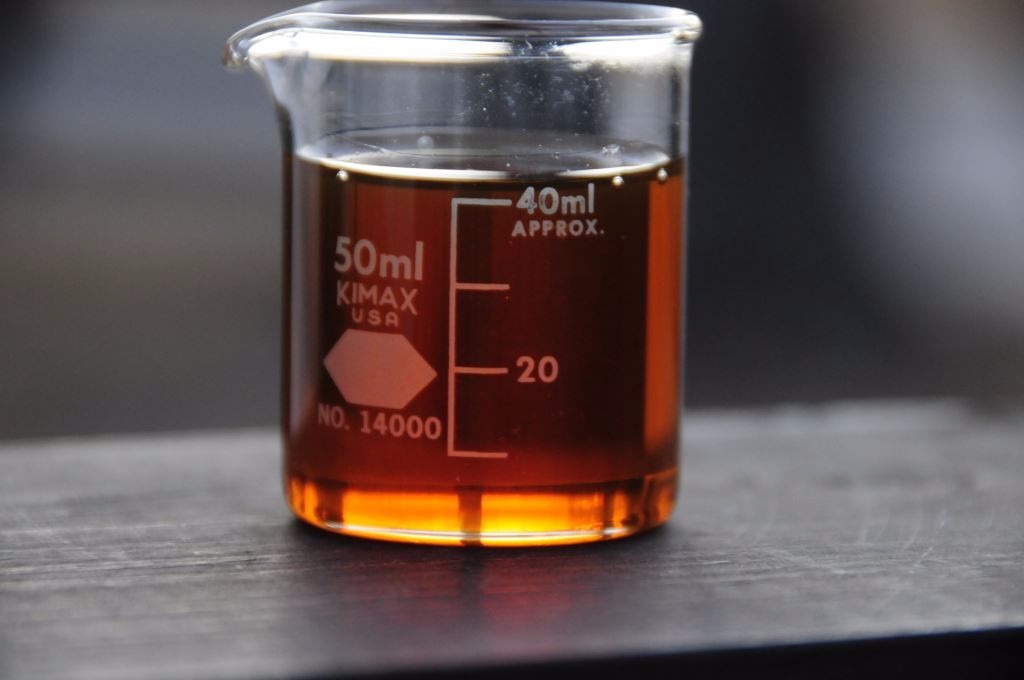
What’s in an additive or the fuel it’s being added to? Without lab testing there’s no way to know, and no way to ascertain whether any enhancement is needed.
Lately, there’s been a great deal of publicity; some would say hype, about diesel fuel’s lubricity, its slipperiness component. The reason the worry level has increased of late is related to the decrease in sulfur mandated for on-road diesel starting in 2007. At that point, most on-road diesel had to meet a 15 part per million standards (lowered from 500 ppm). Myth buster fuel factoid number 2 (number one, mentioned earlier, is most biological fuel contamination is bacteria, not algae, based), sulfur is not a lubricant. I cringe whenever I read or hear this from an expert or salesman. Rather, the process by which sulfur is removed from diesel fuel, using steam and called hydro-treating, collaterally removes some of fuel’s lubricity as well. Rest assured, however, engineers who spec fuel quality and operate refineries are well aware of this issue and they have in place protocols to deal with the decreased lubricity; they simply add lubricity agents at the fuel “rack”, where fuel is dispensed.
Herein lies the problem, and not to sound too alarmist but, mistakes can happen when it comes time to add these agents. In fact, according the folks at Power Service, an additive manufacturer that operates its own testing lab, “approximately 40% of the ‘ready for sale’ fuels obtained in North America during 2010 did not meet the 520 HFRR (more on what that means in a moment) maximum specifications when tested at Power Service’s lab (81 of 202 samples).” Fifty six of the samples exhibited an average wear scar of 624, sobering numbers to be sure. As a point of clarification, the 15 ppm requirement for on-road diesel does not apply to fuel purchased off road, i.e. for use in boats. However, most fuel distributors are unable or unwilling to stock and distribute both low sulfur, 500 ppm, and ultra-low sulfur, 15 ppm, diesel. Therefore, ULSD is likely being shipped to many off road retailers, including fuel docks.
Lubricity is important because of the fine tolerances of the components within the fuel injection system, some of which are measured in ten-thousandths of an inch. If the fuel’s lubricity is too low, improper lubrication will be afforded fuel injectors and high pressure pumps, which will lead to their untimely demise. They will essentially grind themselves to death. What’s most insidious about this type of failure is there are typically no outward symptoms, the engine runs just fine, there’s no smoke or knocking and fuel economy remains normal, until the engine becomes difficult to start or the injection pump fails, by which time the damage is done.
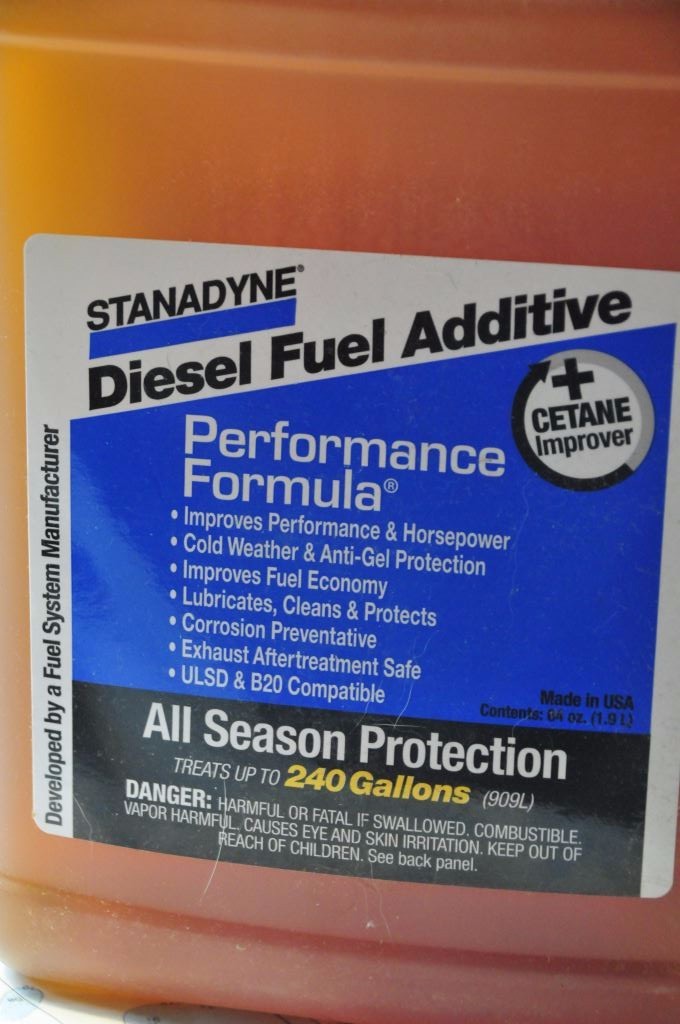
When selecting an additive, it’s worth considering the manufacturer’s background. Stanadyne, supplier of Performance Formula, designs and manufactures diesel fuel injection systems, thereby increasing their credibility in this arena.
HFRR and what it means; Diesel fuel sold within the US is required, technically, to meet an ASTM standard, D-975, which includes no lubricity standard per se, other than a testing method. S-15 ULSD, on the other hand, does include a lubricity standard. The lubricity is measured using a device called a High Frequency Reciprocating Rig or HFRR. This testing tool essentially places a load on a bearing for 90 minutes and uses fuel as the lubricant. After the test is complete the size of the wear “scars” on the bearing are measured. The ULSD S-15 standard limits the size of such scars to 510 microns. A micron is pretty small, a millionth of a meter, however, considering the duration of the test, just 90 minutes, it’s telling (the larger the scar, the poorer the lubricity). If the fuel meets that standard all should be well, sort of. You see, some engine and fuel injection system manufacturers don’t believe the rating is conservative enough. John Deere for instance calls for fuel that is slipperier, making smaller, 450 micron or smaller wear scars, which would require the use of a lubricity additive to lower the HFRR number. Interestingly, an HFRR of 460 is in line with the European standard for diesel fuel, EN590. The Europeans run a heck of a lot of diesel-powered automobiles and trucks (60% of their passenger cars are diesel-powered) and thus, in my opinion, this tack is worthy of our attention. And, as was detailed above, it’s possible that some fuel may indeed not meet the minimum 510 requirement at the pump.
I posed the question regarding lubricity to Bob Senter of Northern Lights, manufacturer of venerable gensets and Lugger propulsion engines. I’ve known and worked with Bob for years, and as the axiom goes, he’s forgotten more about diesel engines than most other pros know. Senter says, “D-975 contains a viscosity specification but nothing regarding lubricity. ULSD incorporates a lubricity specification, albeit a marginal one that may be insufficient to meet most manufacturer’s minimums. It seems a bit counter intuitive but I suspect the lubricity spec inclusion came about as a result of the aggressive hydro-treating required by the refineries to strip out the sulfur. When I last checked, ULSD’s lubricity spec was 2800 grams and .510 mm scar on SAE’s BOCLE (HFRR) test, where manufacturers like Deere have been firm pegged at 3100 grams and .450 scar. Deere, like the other manufacturers, buys fuel systems from Denso, Stanadyne, Bosch, Delphi and a few others.
As you can see, there’s ample reason for concern regarding lubricity. Considering that, adding a lubricity improver is probably not a bad idea, particularly for high pressure common rail engines, as they place a greater burden on fuel for lubrication of injection components (they operate at 25,000 to 30,000 psi).

Biodiesel adds a whole new dimension to additives, particularly where water is concerned. However, there’s a silver lining to this dark cloud, biodiesel is quite slippery, and in many cases it’s added to fuel to raise its lubricity after hydro-treating, the process whereby sulfur is removed.
How do you choose a lubricity improver? Start by asking the manufacturer if it has tested fuel dosed at the recommended concentration with their additive using the high frequency reciprocating rig or HFRR mentioned in the previous column, and if so what was the wear scar size or improvement when compared to untreated fuel? If they say, “what’s a high frequency whatchamacallit?”, then confidence in the product , if not the representative, at least its ability to enhance lubricity, would necessarily be called into question.
Manufacturers and vendors of these products should be well versed in their content and performance should be measurable, even if it’s not from an independent third source lab, although that’s certainly preferable. It’s too easy for manufacturers or distributors of additives to rely on anecdotal evidence; the familiar testimonials that heap praise on a product based on users’ experience, while valuable to a point, should only serve as an adjunct to solid, scientific lab results.
Among other things, lubricity improvers should never be used unless you have first determined their makeup. Don’t worry, this doesn’t mean that you have to head to the community college for a night chemistry class. Instead, determine if the additive contains an acid-based, dimer or monoacid-based lubricity enhancer. This type of lubricity agent, while very effective at reducing wear is also highly reactive when it comes into contact and combines with metal cations such as calcium and sodium, elements that are frequently found in fuel tank bottoms. Even if your tanks are spotlessly clean, these contaminants can exist as residuals from the refining process, i.e. they enter the tank with the fuel. Ultimately, this reaction forms what the industry refers to as “soaps” and, as the name implies, it’s a waxy, viscous deposit that is capable of clogging filters and causing injection system deposits. Additionally, if the additive performs other functions, such as mitigation of water, ensure that it is alcohol-free. Most diesel engine and fuel injection system manufacturers prohibit the use of additives containing alcohol.
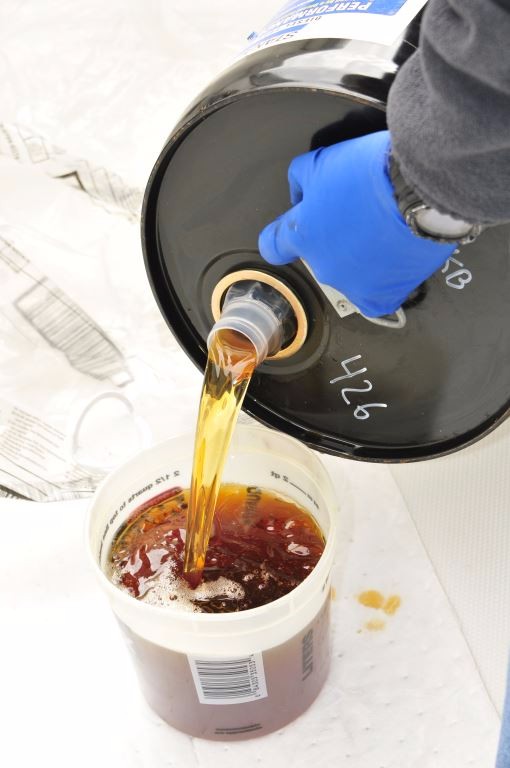
A lubricity and cetane enhancer being measured aboard a cruising vessel taking on fuel in Greenland. Because the quality of fuel both at home and abroad is never certain, using a lubricity additive is reasonable and represents a belt and suspenders approach.
Ideally, the lubricity improver that you choose will be recommended or at least approved by your engine (and generator) manufacturer. Engine manufacturers who recommend lubricity improvers do so knowing that users will very likely include those with brand new engines, engines that are under warranty. They therefore have a strong incentive to provide or approve a product that will extend the life of the injection system components and avoid filter clogging or deposition of substances within the fuel system, all of which generate undesirable warranty claims.
You also have the option of obtaining fuel from a source that guarantees its lubricity to be better than commercial grade diesel fuel, such as ValvTect. I’ve interviewed the folks at ValvTect on several occasions on a variety of fuel-related subjects, including lubricity. I’m happy to report that they do carry out HFRR tests on the additives used to formulate their ValvTect Marine Diesel Fuel and guarantee that their marine grade diesel and additive exceeds, at the very least, the ASTM 520 micron wear scar requirement used by refiners for commercial grade ULSD fuel.
The bottom line on lubricity improvers is they make good sense and are cheap insurance considering how costly damage from fuel that lacks proper lubricity can be.
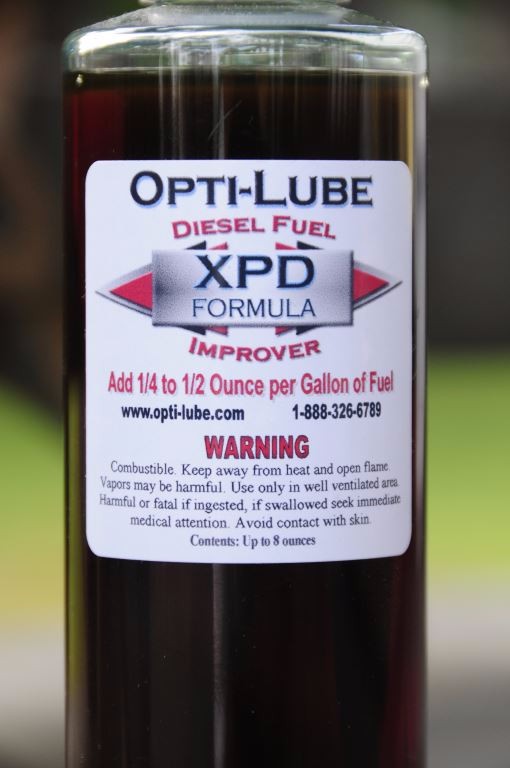
In many cases less is more; this lubricity enhancer does just that, and only that, improve a fuel’s lubricity.
Cetane Improvers
Cetane is roughly analogous to gasoline’s octane; however, its effects on the combustion process are just the opposite. Octane retards the combustion process, encouraging gasoline to burn rather than explode (this is why higher octane gasoline reduces knocking, the knocks are small explosions inside the cylinder), while cetane makes diesel fuel more likely to ignite. Because diesel fuel relies on heat generated by the compression of air within the cylinder to ignite the fuel, encouraging this process with higher cetane, thereby minimizing the delay between the moment the fuel is injected into the cylinder and the point at which it begins producing power, makes starting easier, reduces smoke and generally improves engine performance. Additionally, higher cetane content can reduce engine noise as well as formation of crankcase oil sludge and combustion chamber soot.
Cetane content, expressed as a number often between 40 and 55, is one measure of a fuel’s ignition quality. Most diesel engines benefit from higher cetane fuel, however, high speed diesels stand to benefit the most because of the rate at which their pistons move necessitates the quickest possible combustion process. All diesel engine manufacturers specify a minimum cetane requirement for their engine design.
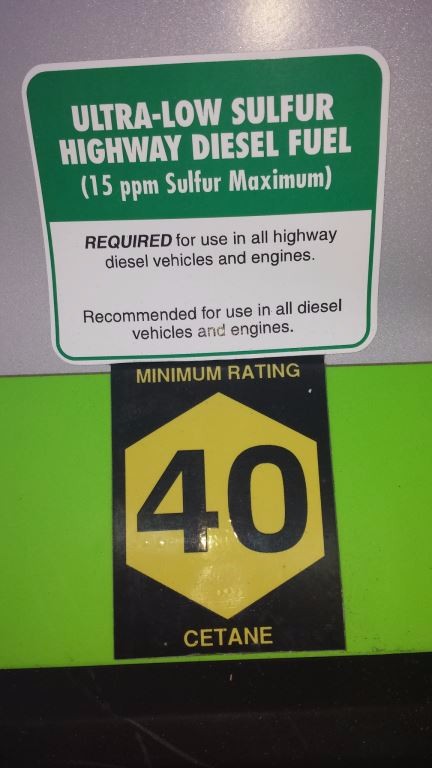
Cetane is a measure of diesel fuel’s ignitability, 40 is considered the minimum allowable level by most engine manufacturers. If you can get it, 45 is preferred, and if not it can be improved with an additive. Contrary to popular belief, sulfur is not a lubricant, however, it’s removal process can lower a fuel’s lubricity.
If it’s necessary to crank your engine for long periods (anything longer than about three seconds is too long) to attain self sustaining combustion and if the start up process is accompanied by billowing clouds of white smoke, shaking and heavy vibration then it may be worth trying a tank full of fuel doped with a cetane booster. Typically, cetane boosters will raise the cetane level by three to seven points. Anything over 50, however, offers no additional performance enhancement or value.
Beware, however, as useful as it is, cetane booster isn’t a mechanic in a can, it won’t remedy valves that are out of adjustment, carbon clogged piston rings, weak batteries or undersized battery cables, all maladies that will produce the same or symptoms similar to low cetane fuel. Before using a cetane booster to remedy one of these issues, it’s important to make sure your engine is in proper working order.
Even if your engine is expertly maintained, or it it’s new, while it may not be necessary it will nearly always benefit from fuel whose cetane content is higher. Cetane sold at fuel docks is often either 40 or 45. If you have the option of buying either, the 45 is likely worth the small increase in price as you will likely realize a slight increase in fuel economy. Otherwise, buy the cleanest fuel you can get and, if you choose, use a cetane improver to obtain the fuel economy, starting and running characteristic benefits it provides.